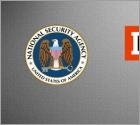Internet threat news

It’s no secret that the NSA has been spying on the American populous for years – facts that were proven when Edward Snowden began sharing secret government files proving as much. From phone tapping to elaborate malware deployments created to spy on other countries (and American citizens), the NSA seems to have no shortage of tricks up its sleeve. But what happens when even the NSA doesn’t have the resources available to commit its next great act of treason? Simple… It simply leverages the power of existing botnets. Botnets, which by many accounts, are the very thing organizations like the NSA should be protecting us from.

Researchers from Dell SecureWorks recently discovered a sophisticated malware variant which allows hackers to authenticate themselves as any user on a Windows Active Directory server using any password once the network has been infiltrated using stolen login credentials. Based on the malware analysis offered by Dell, it appears that Skeleton Key – as named by the Dell researchers responsible for discovering the malware – was carefully designed to do a specific job. This malware is deployed using an in-memory process ‘patch’ that uses the compromised admin account used to access the system in the first place.

Adobe Flash has been a favorite target for hackers for years because there are many ways to exploit the platform whereby hackers can install malicious code on the PC including banking Trojans, key loggers and other dangerous malware. Using various drive-by download techniques, hackers are able to bypass security measures within Adobe Flash and patching these vulnerabilities has become a drawn out game of cat and mouse. Adobe patches while hackers find new vulnerabilities and the cycle continues. This is exactly what happened after Adobe released a patch last week.

A cybersecurity security firm (Cyphort) recently reported that the AOL Ad Network was responsible for spreading malware in the form of malicious advertisements found along the sidebars of popular websites including the Huffington Post, Game Zone, Weather Bug and others. The AOL Ad Network, which supports ad platforms in both the United States and Germany, reports serving nearly 200 million user impressions every month. In fact, 90% of U.S. Internet users are exposed to the AOL Ad Network every day.

Asustek Computer produces a wide range of technology products ranging from PCs and associated peripherals to routers used by consumers and businesses around the world. A vulnerability was recently discovered in Asuswrt, the firmware used on many Asus branded routers. Once exploited, this vulnerability gives the hacker complete control of the router and ultimately, the entire network. The flaw is actually located within a service called infosvr. Infosvr runs on Asuswrt-powered routers by default and is leveraged by the Asus Wireless Router Device Discovery Utility.

Security analysts from Trend Micro Lab discovered a banking Trojan last month that was specifically targeting South Korean banks. While this may not appear to be especially newsworthy at first glance, a recent discovery about this class of banking Trojans is of much greater concern. Rather than communicate with C&C servers using conventional encryption protocols to avoid detection, TPSY_Banker.YYSI (as it has been dubbed by Trend Micro) uses Pinterest to communicate with C&C servers.

Security Researchers recently discovered yet another threat to websites running a popular content management system (CMS), WordPress. This threat, which has been dubbed SoakSoak, is the latest malware threat specifically designed to target websites operating the CMS and has already resulted in over 11,000 domains being blacklisted by Google. WordPress has become extremely popular and can be found on the backend of nearly 60 million websites worldwide (meaning approximately 1 in every 6 websites run the CMS) so it’s no wonder hackers have started targeted the infrastructure more regularly in the last few months.
More Articles...
Page 51 of 52
<< Start < Prev 51 52 Next > End >>